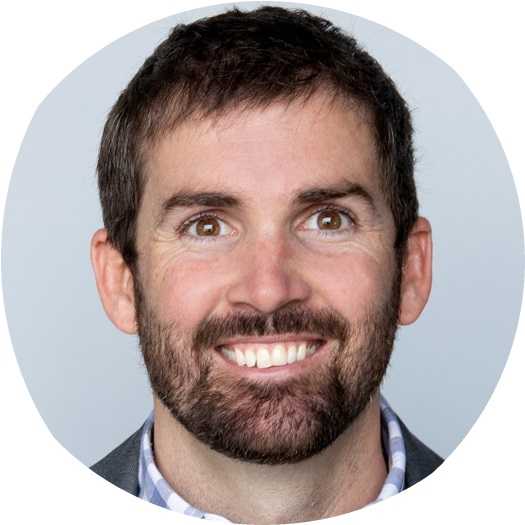The inbox in 2019 is a more competitive space than ever. Email marketers are going to have to work hard to get those all-important opens, and even harder to sustain engagement. Here at Ongage we’re committed to giving our clients the best possible head start. Our platform helps bulk mailers to optimize deliverability and cut costs – but we know that this is only one part of the email marketing puzzle. There are other ways to ensure that your emails stand out in the inbox of 2019.
To get to the bottom of what’s really going to grab customers’ attention this year, we reached out to a number of experts in this field, and asked them:
“What’s your expert advice for professional marketers striving to land in the inbox in 2019?”
 Anthony Chiulli, Director of Product Marketing at 250ok:
Anthony Chiulli, Director of Product Marketing at 250ok:
Optimal inbox delivery requires marketers to effectively balance the opposing forces of sending email with the sole purpose to meet revenue goals while chasing the elusive 1:1 personalization.
Brands achieving high and consistent inbox placement are masterful in two email marketing disciplines.
Hyper-Personalization
We are living in the age of personalization. Access to subscriber data is abundant and continues to be one of the top priorities for marketers each year, and for good reason. Marketers who can truly connect data points from subscribers through multiple sources and effectively infuse subscriber data into messaging are proven to achieve higher relevancy, engagement, and conversion.
Think beyond personalizing first name and subject line. Infuse behavioral data with personal preferences, demographics, location, preferred send time, product recommendations, and other data signals to create relevant and meaningful content. It humanizes the experience for subscribers, creating an emotional connection with the brand. With major mailbox providers including Gmail, Verizon Media, and Microsoft heavily relying on engagement-based filtering, marketers that excel in creating hyper-personalized messages reap the benefits of consistent inbox placement to engaged recipients.
Automation
Marketers leveraging triggered messages and automation to send the right message to the right audience at the right time capitalize on higher inbox placement, because automated emails are often triggered by a recipient’s action. The email is uniquely positioned to be timely, personalized, and (likely) wanted. This technique demonstrates brands’ commitment to building an individualized relationship with their subscribers, and results in some of the most highly engaging emails.
About Anthony: Anthony is the director of product marketing at 250ok. With more than a decade of email experience, Anthony embraces educating and advising email marketers on the latest trends and insights within the email industry as director of product marketing. Before joining 250ok, Anthony’s prior roles included Marketing Practice Lead, Deliverability Services at Salesforce Marketing Cloud, and Senior Account Manager at Return Path.
 Andy Shore, Content Manager at Benchmark Email:
Andy Shore, Content Manager at Benchmark Email:
Just because we were asked to give advanced tips on deliverability and inboxing, doesn’t mean I have to start throwing acronyms like SPF, DKIM and BIMI and you. Advanced doesn’t have to mean complicated.
Something might be advanced, simply for the fact that nearly half of email marketers aren’t doing it.
It’s true. There is one thing you can do that will get you more opens, more clicks, generate more revenue and, for the sake of this article, help your email deliverability and ensure you’re hitting the inbox as intended. And it’s SO easy to do.
Send your brand new subscribers a Welcome Email.
Only 57.7% of businesses send a Welcome Email to their subscribers, so sending one will give you a leg up over many other email marketers.
The numbers support this strategy for deliverability. We know that subscribers engagement will help your overall deliverability. Well, Welcome Emails have been shown to generate four times more opens and five times more clicks. They also average a whopping 50% open rate!
Most email subscribers expect to receive a Welcome Email, so you’re already sending them something they’ll be looking for. Send it immediately upon opt-in. That’s part of why they’re so effective.
Welcome Emails also help you to set expectations for the rest of your emails to follow. They’re the first impression that can help make subscribers want to open all of your emails to come. This is why send a Welcome Emails is the strategy you need to help your inboxing efforts.
About Andy: Andy Shore is the Content Manager at Benchmark Email. He’s spent nearly a decade helping businesses to understand the value of their email list and how to maximize it. He enjoys sharing his expertise and discussing email marketing as passionately as others talk about Game of Thrones, sports or food (though he’s passionate about those things too).
 Kath Pay, CEO of Holistic Email Marketing:
Kath Pay, CEO of Holistic Email Marketing:
Deliverability can be a challenge for marketers, as according to ISPs, deliverability is based on an engagement metric (the open rate). This is different to a marketer’s success metrics. ISP’s deem an email to be successful when it is opened, however marketers deem success to be based on clicks, conversions and revenue – with the latter two not actually happening within the email itself.
For a marketer, the open rate can be helpful, but it is a top of funnel metric and an open doesn’t necessarily predict a conversion – not as well as a click does. Furthermore, if we were to optimise for opens, then, as numerous tests and studies have proven, we could be losing out on conversions and revenue, as we could well be optimising for the wrong audience. But if we optimise for clicks or conversions, we often will be achieving less opens, which good deliverability is reliant upon. Oh, what a conundrum!
The answer is simple. We need to optimise not for a metric, but for the customer and their needs or objective. If we focus on the customer and their experience and deliver helpful, personalised and customer-focused emails (calling upon the 3 Pillars of Customer Experience), will not only achieve the engagement we need for good deliverability, but we will also achieve the clicks and conversions we need for our campaigns to be successful. By helping the customer achieve their objectives, we help ourselves achieve ours.
About Kath: Kath lives and breathes email marketing and is recognised as a leading international email marketing thought leader. As CEO of Holistic Email Marketing, she devotes her time to developing customer-centric ecommerce journeys using a holistic, multi-channel approach. With a wealth of knowledge gained from being an industry veteran of 19 years, Kath is an author, blogger, expert contributor, international conference speaker, and trainer.
 Jenna Tiffany, Founder & Strategy Director at Let’sTalk Strategy:
Jenna Tiffany, Founder & Strategy Director at Let’sTalk Strategy:
Getting the edge within the inbox of 2019 is all about subscriber trust, relevance, and accessibility. I’d urge email marketers to experiment with emerging technologies. For example, Alexa is now capable of reading out emails and even transcribing emails. Sure, this may create some issues with formatting etc, but it’s also a huge opportunity. The visually impaired (or simply those with their hands full!) will now have access to emails which was not previously available to them. That’s a fantastic development, and one which we should definitely be making the most of. Learning how to incorporate and adapt to new developments is something which has always been vital for marketers.
As always, remaining relevant and valuable to your subscribers is also absolutely crucial. One of the best ways to ensure that you’re sending the right material to the right people is (of course) to strategise. Coming up with a full and comprehensive strategy is the only true way to get to know your customers and to make sure that you’re sending them the kind of content they’ll appreciate. Strategising is often underdone and underappreciated, but it is hugely important if you’re to have a fighting chance of making yourself stand out in the modern inbox. I strongly suggest taking more time than you might think to ensure that your strategy is as comprehensive as possible.
About Jenna: Jenna is the Founder & Strategy Director at Let’sTalk Strategy. Jenna is a Chartered Marketer, an awarded Fellow of the IDM and an elected member of the prestigious DMA UK Email Council, Chairing the Best Practice hub. Jenna is a reconigsed email expert consulting with brands such as Hilton, Shell and World Duty Free to name a few.
 Chris Marriott, President of Email Connect:
Chris Marriott, President of Email Connect:
A truly successful email has to do two things; land in the inbox, and get noticed and engaged with. How successful you are at the latter, has a big impact on your ability to get into the inbox. ISPs pay close attention to the promotional campaigns marketers send and will throttle campaigns (or worse) if a marketer continues to send campaigns that include what an ISP considers to contain too high a proportion of inactives. Most of the other experts featured here will give you tips on keeping your list engaged. I’m going briefly focus on the other way you can kill your inbox placement.
And that is by engaging in acquisition tactics that have a negative impact on your inbox placement. In practice this means that you should never add anyone to your subscriber list that you don’t know for certain wants to be there. Sounds straightforward, right? But every time you use co-registration to acquire new addresses you are breaking this rule. In fact, if you pre-check a “sign me up for email” box during the purchase confirmation process on your site you are also breaking this rule. Free-will opt-in means exactly what it says. A person has willingly shared his or her email address with you for the express intent of getting promotional emails or newsletters from you.
Subscriber acquisition is no longer about how many new email addresses you add; what counts is how many email subscribers you add to your list. What’s the difference? An email address just sits in your database. You want to add email subscribers who open, click and transact.
About Chris: A 25-year veteran of digital marketing, including well over a decade in email marketing, Chris is a recognized expert in the process of connecting leading brands with the right marketing technology partners and platforms. Since 2013, Chris as been providing consulting support for marketers looking to change their current email services provider and/or other martech platforms through a Request for Proposal (RFP) process.
 Noam Rotem, Head of Professional Services & Product Consulting at Ongage:
Noam Rotem, Head of Professional Services & Product Consulting at Ongage:
People-Based Marketing
Holistics may be one of the more popular approaches of the 21st century for good reasons, as it looks at the whole person, as an individual, rather than just analyzing and treating symptoms and metrics.
In that vein, in 2019, marketers are looking to reach individuals, like Amy, Jessica, Daniel and James rather than just inboxes.
The Personalization-Engagement Payoff
This is achieved by messaging and content that is personalized for each individual recipient, based on their personal likes, interests and preferences. When delivered at the right time and dose, it breeds customer engagement and value. In return marketers enjoy brand equity, not just with their customers, but from the ISPs as well — the inbox gatekeepers.
Email personalization basics
The song Do-Re-Mi from the classic movie “The Sound of Music”, stated: “when you read you begin with A, B, C, when you sing you begin with Do, Re, Mi”. In the case of email marketing, the equivalent is SPF, DKIM, DMARC, not quite as catchy, but is key for sender authentication, without it, ISPs nowadays will often reject your message altogether (aka soft bounce). But once that technicality is in place, it’s all about the above.
How do I personalize my email?
In 2019, more than ever, digital marketers have at their disposal an extensive array of tools and technologies, to reach and affect individuals, such as:
- Easy to use segmenting, providing the ability to target who they want, and exclude those who don’t want.
- Preference centers for collecting each individual’s interests and preferences.
- Dynamic content by means of content feeds and data-point logic, to easily send fully tailored content to each individual, based on their unique interests and location.
- Automated rule-based triggers, to automatically send to individuals when most relevant to them.
Last but not least, the time old cliché, to love someone is to let them go, is ever more true when it comes to email marketing. Let go of individuals who remain unengaged. It pays off not just in overall brand equity, but also with top-rate sender reputation with ISPs, and your key to the inbox.
About Noam: Noam has been at Ongage from its inception, and has served in a variety of roles from Sr. Product Manager, Marketing Manager, Head of Support and Professional Services. Currently, Noam heads Ongage’s Product Consulting and Professional Services, providing MarTech and strategic product consulting, to existing and on-boarding clients in both the pre-sales and post-sale phases.
 Ryan Phelan, Email Marketing Consultant at Origin Email Agency:
Ryan Phelan, Email Marketing Consultant at Origin Email Agency:
First:
Your acquisition must be honest.
Acquire customers based on the idea that they want to hear from you. Not you thinking they should want what you have to tell them.
This means “Don’t buy a list.” But, it also implies that your acquisition tactics must line up with your customers’ expectations about what you’re going to deliver.
What if you send them something they don’t want? It’s easy to hit that “Report Spam” button.
Next:
Capture information about why subscribers want to hear from you.
We’ve talked for years about whether relevance matters in email. It’s fun to go all iconoclast and say “Relevance doesn’t count,” but you’re still making a brand impression with your email.
Relevance is the brand promise you made at acquisition. Do you use all the data you have at your fingertips to deliver a message that resonates? Do you have the capacity to measure the results?
It’s not just reporting. It’s subscriber activity. What are they opening? Clicking on? What are they buying? What don’t they buy? Use that information to group your customers into different categories. Then, have your email content reflect those categories.
Are you doing this extra work? Or are you just pushing the “Send” button?
If you’re doing the work, making sure you deliver on your brand promise, you won’t end up in the spam folder. If you’re just pushing the button, you’re just setting yourself up for systematic problems throughout your tenure in email.
Do the work!
About Ryan: Ryan brings nearly two decades of global online marketing experience to Origin Email Agency focusing on driving GTM strategies for high growth SaaS software and Fortune 250 companies. Ryan is a respected thought leader and nationally distinguished speaker with a history of experience from Adestra, Acxiom, BlueHornet, Sears Holdings, Responsys and infoUSA.
 Kate Nowrouzi, Senior Vice President of Deliverability Services at SparkPost:
Kate Nowrouzi, Senior Vice President of Deliverability Services at SparkPost:
Deliverability is half art, half science. The art part is where creativity, relevancy, and frequency come into play. The science part is how well your infrastructure is set up. This varies from proper authentication (SPF, DKIM, DMARC) to domain alignment in the header (MailFrom, d=domain, FromAddress). The science part is the easy one– most popular ESPs have the science part down. The challenging part is the art of deliverability.
Today’s definition of email marketing is different than what it was 10 years ago. The batch and blast days have shifted to triggered messaging. Still, email remains one of the best channels for personal communication and continues to be a great way for brands to increase their marketing ROI. Many successful brands exclusively send personalized messages to their subscribers, and as emails that are not personalized may end up in the ISP’s spam folder. The one-to-many campaign days are long over now.
Personalization makes people feel special. When customers know that they matter, they’re more likely to engage with an email. And, if you can make note of this type of customer behavior, you can easily modify your future campaigns for greater success.
It is very important to remove inactive users from your mailing list. Inactive has a different definition in each industry, it could be 30 days for one company while it could be 12 months for another. If someone has not opened or clicked your mailing in 12 months, it is best to remove them from your future mailings.
Major ISPs such as Gmail and Yahoo take engagement into consideration for inbox placement. At SparkPost we encourage our customers to segment their traffic based on engagement on separate IPs/ domains/ sub-domains and into 3 groups:
- Active (opens in less than 90 days)
- Semi-active (90-180 days engagement)
- Non-engaged (opens in 6-12 months)
If you have chosen a solid ESP and pay close attention to how customers interact with your emails, you will rock 2019 and beyond.
Happy Delivering!
About Kate: Kate is the Senior Vice President of Deliverability Services at SparkPost. She helps SparkPost customers achieve a high inbox rate through following email marketing best practices. A recognized authority on email deliverability and anti-spam practices, Kate worked for many years on the anti-abuse team at AOL and was also a network engineer at the pioneering ISP, UUNET/ Verizon.
 Tim Watson, Founder of Zettasphere:
Tim Watson, Founder of Zettasphere:
Most people think avoiding the junk folder is all about avoiding spam trigger words. It’s been some years since that was the key to deliverability. The inbox providers are much smarter now.
Inboxing in 2019 needs a good reputation.
- Inbox placement is driven by reputation. Reputation of your domain and reputation of the IP addresses you send from.
- Reputation is driven by positive and negative signals. The behaviors of users when they get your emails.
- Behaviors are driven by email address capture source and customer expectations.
Examples of the positive behaviors that help you stay in the inbox are when your emails are opened, when users reply to your email and if they add you to their address book.
Whereas examples of the negative behaviors are emails never being opened, your email moved to the junk folder (aka complaint) or if you email spam traps and large numbers of inactive email addresses.
Positive behaviors are strongly dependent on how you build your list and run list hygiene. A great list comes from only adding data on a permission basis and being transparent about what users are signing up for.
With a focus only emailing people for whom you have first party permission and who are informed about what you will send may be all you need to keep inboxing.
About Tim: Tim’s an email marketing consultant and international speaker who’s been invited to present at conferences in over half a dozen countries. Because of his analytical background Tim has a firm focus proving what works in email – not assuming. Mostly he’s deep in email strategy, advising brands from start-ups to enterprises how to boost their email marketing results.
Summary
Lots of great advice, and plenty to think about! A few themes, however, keep rearing their heads in our expert’s answers. Let’s break it down:
- Relevance. According to our experts, this has to work both ways. There’s no point in filling your subscriber list with people who aren’t really interested in what you’re saying. You can find ‘relevant’ customers by putting the power back into the hands of your subscribers, and letting them consciously choose whether or not to hear from you. Once they’ve subscribed, make sure to keep them engaged with content that’s relevant and useful to them.
- Hyper-personalization. You can’t give the consumer relevant content if you don’t know what they’re like. Relevance and personalization go hand in hand. As several of our experts have pointed out, hyper-personalization relies upon diligent data-work, so make sure that you’re picking up on the right data points. But remember to remain customer-focused during your analysis. It’s tempted to get carried away with click and open metrics, but shifting your focus to engagement metrics which demonstrate customer interest will help you to give your subscribers what they want.
- Adaptability. Automation, voice-tech, AI – the world of email marketing is changing fast. Those who adapt to and embrace this brave new world will be the ones to prosper in it.
- Strategy. None of the above is really possible without first putting a strategy in place. To be successful in the 2019 inbox, you need to be working to a properly thought-out strategic map.
If there’s one overall thread which runs through our experts’ responses, it’s that of being trustworthy. Let the consumer choose to subscribe, then prove your trustworthiness by giving them relevant content which fulfils your initial promise. Don’t trick or cajole people into subscribing when you’re not really what they’re looking for. Build a reputation for relevance, engagement, and trustworthiness, and people will come to you.
To find out more on email deliverability, check out our comprehensive guide!
Interested in more email marketing insights? Be sure to check out our blog!





 Anthony Chiulli, Director of Product Marketing at
Anthony Chiulli, Director of Product Marketing at 
 Andy Shore, Content Manager at
Andy Shore, Content Manager at 
 Kath Pay, CEO of
Kath Pay, CEO of  Jenna Tiffany, Founder & Strategy Director at
Jenna Tiffany, Founder & Strategy Director at  Chris Marriott, President of
Chris Marriott, President of  Noam Rotem, Head of Professional Services & Product Consulting at
Noam Rotem, Head of Professional Services & Product Consulting at  Ryan Phelan, Email Marketing Consultant at
Ryan Phelan, Email Marketing Consultant at  Kate Nowrouzi, Senior Vice President of Deliverability Services at
Kate Nowrouzi, Senior Vice President of Deliverability Services at  Tim Watson, Founder of
Tim Watson, Founder of 






